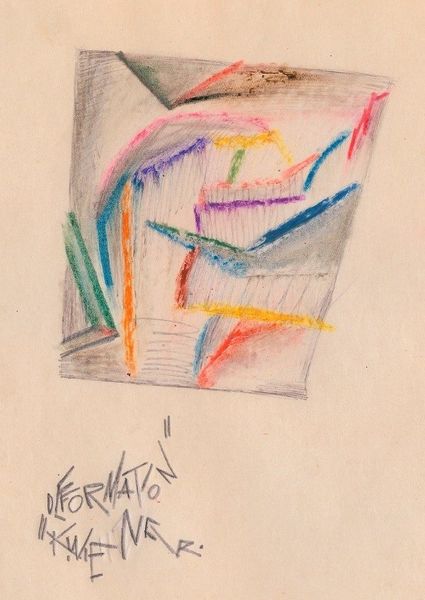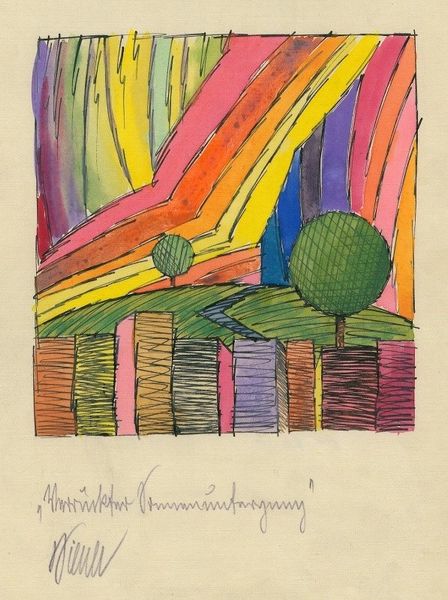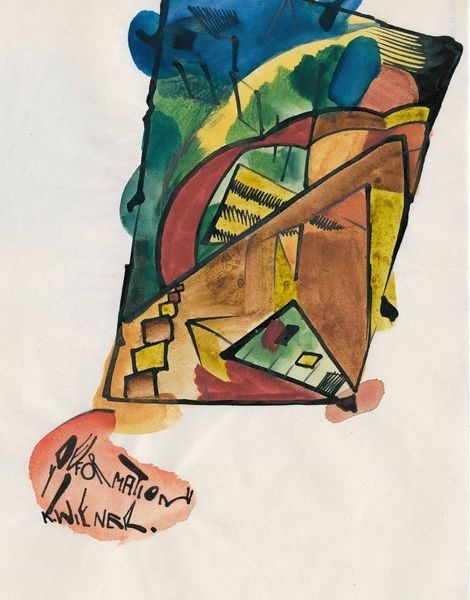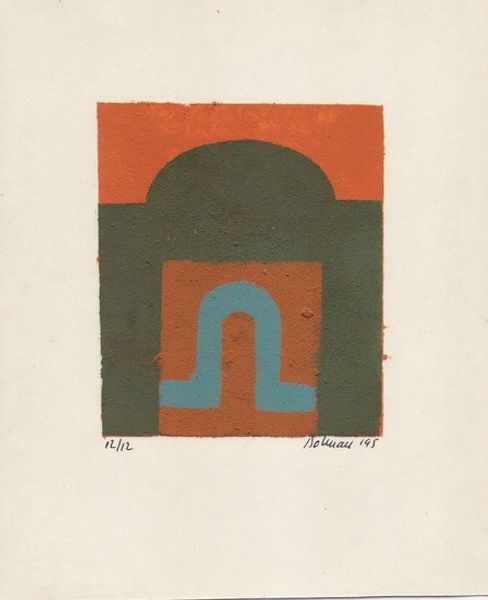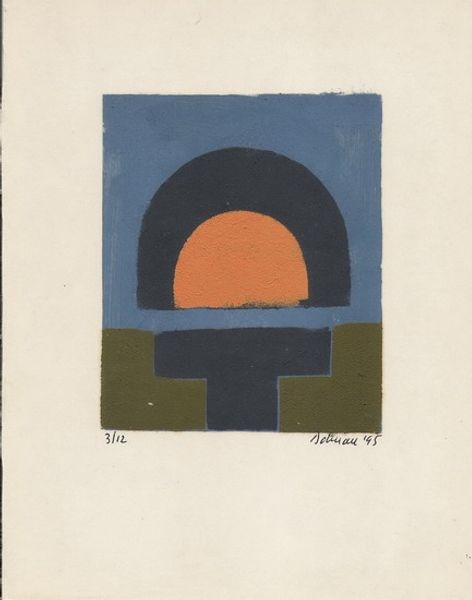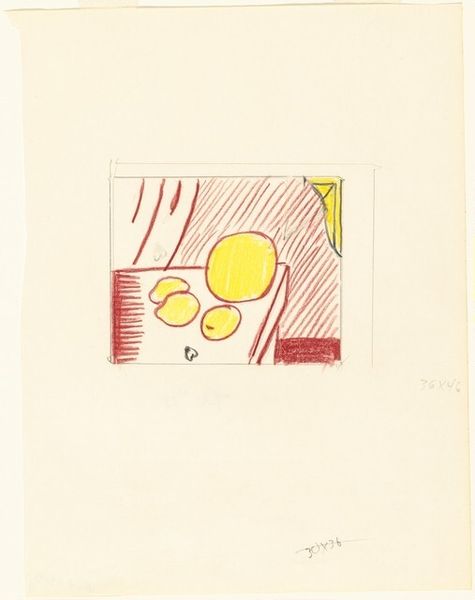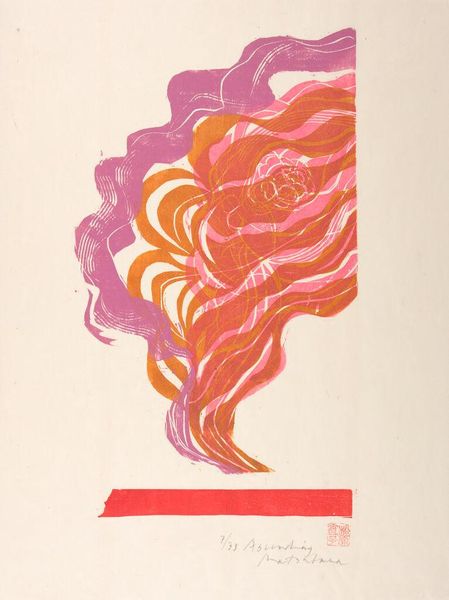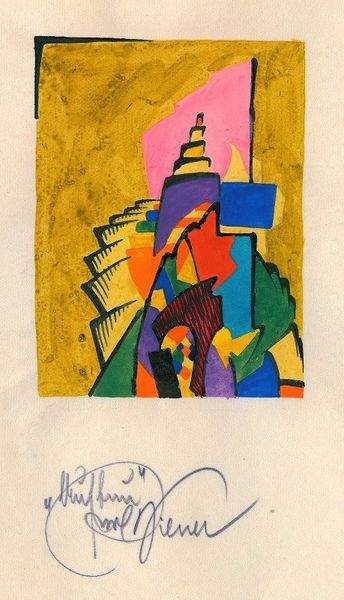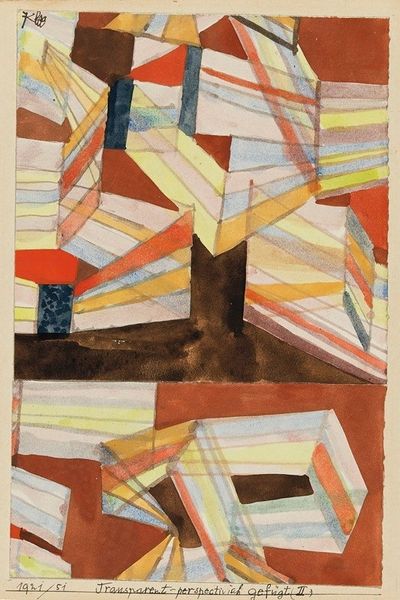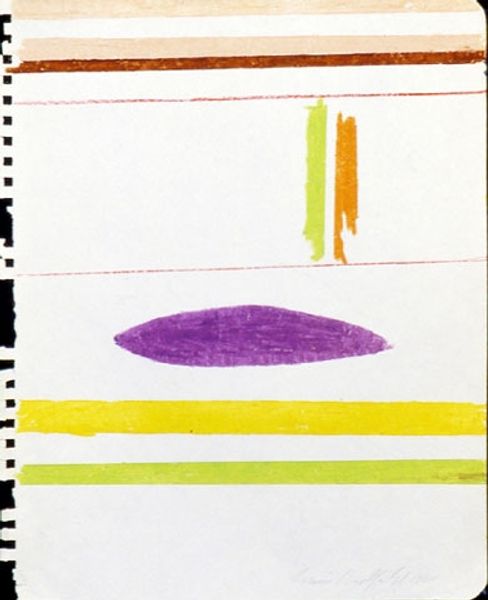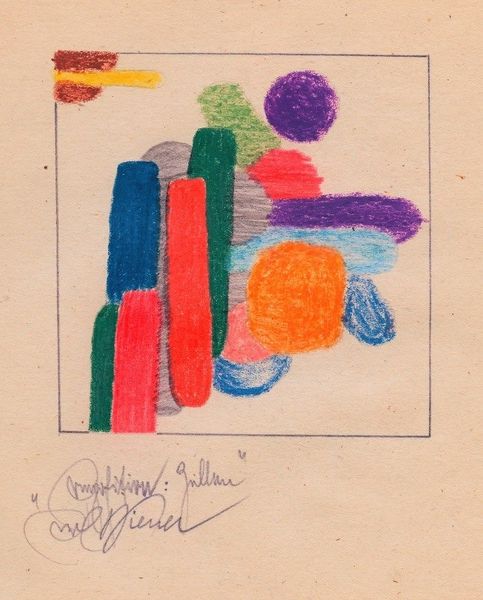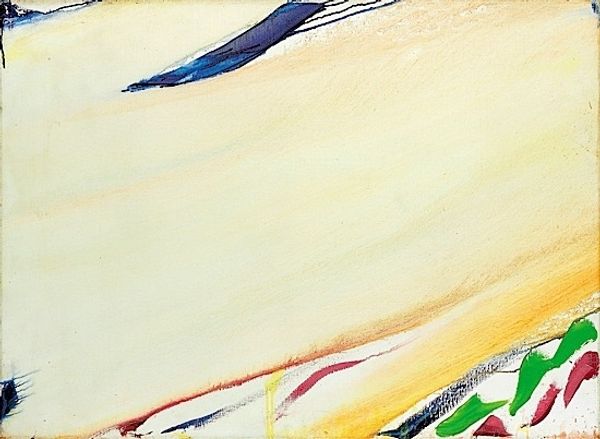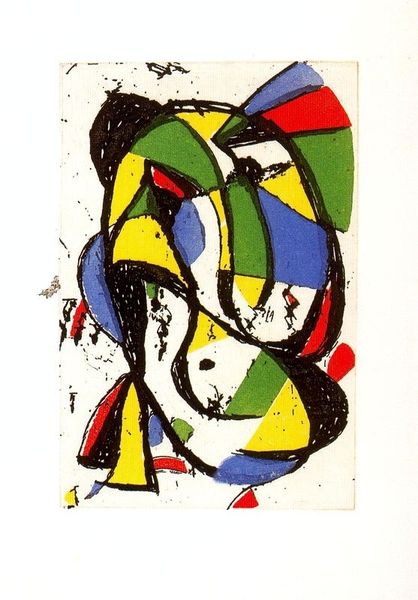
Copyright: Public Domain: Artvee
Editor: This is Karl Wiener’s “Lage,” a mixed-media drawing from around 1923. The vibrant colors and geometric shapes give it a kind of whimsical yet unsettling quality. It makes me wonder what Wiener was trying to convey with this combination of abstraction and precise linework. How do you interpret this piece in its historical context? Curator: Considering its place in history, "Lage" speaks to the period's shifting perspectives after the First World War. The geometric shapes and abstraction reflect a breakdown of traditional artistic values and social structures. The art world saw many artists adopting new visual languages. What role might institutional exhibitions have played in either promoting or suppressing such styles in the 1920s? Editor: I imagine galleries were both embracing the avant-garde while still clinging to more conventional styles, leading to tension and debate. So, "Lage," being abstract and somewhat unusual, would have been part of a larger conversation about what constituted art. How would the public have received such a piece at the time? Curator: Public reaction likely varied wildly. Remember, many still expected art to depict recognizable subjects realistically. Abstract works like this challenged those expectations, possibly provoking confusion, anger, or, for some, excitement. Its very existence questions the public role of art. Do you think its visual language evokes any specific social commentary? Editor: Maybe it reflects the fragmentation of society after the war? The fractured geometric shapes might symbolize a world pieced back together in a new, unfamiliar way. I see the bold lines as trying to redefine space after so much was destroyed. Curator: Precisely. The visual politics inherent in abstraction often reflected a desire to rebuild society from the ground up, artistically and socially. Thinking about these ideas certainly adds layers to our understanding. Editor: Absolutely! Seeing it as a response to the societal upheaval of the time makes me appreciate the complexity of what seems at first glance to be a simple sketch.
Comments
No comments
Be the first to comment and join the conversation on the ultimate creative platform.
